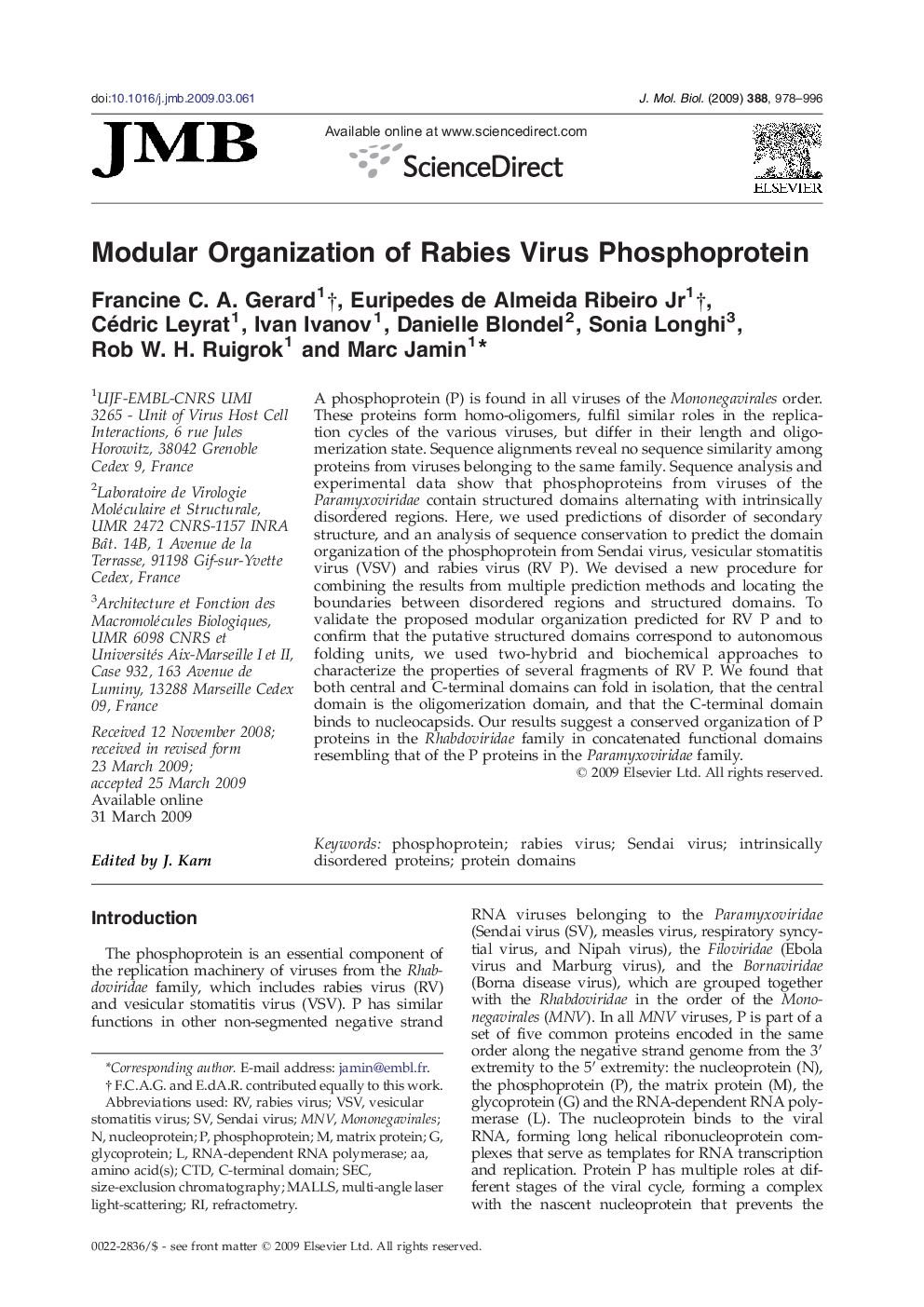| Article ID | Journal | Published Year | Pages | File Type |
|---|---|---|---|---|
| 2186461 | Journal of Molecular Biology | 2009 | 19 Pages |
A phosphoprotein (P) is found in all viruses of the Mononegavirales order. These proteins form homo-oligomers, fulfil similar roles in the replication cycles of the various viruses, but differ in their length and oligomerization state. Sequence alignments reveal no sequence similarity among proteins from viruses belonging to the same family. Sequence analysis and experimental data show that phosphoproteins from viruses of the Paramyxoviridae contain structured domains alternating with intrinsically disordered regions. Here, we used predictions of disorder of secondary structure, and an analysis of sequence conservation to predict the domain organization of the phosphoprotein from Sendai virus, vesicular stomatitis virus (VSV) and rabies virus (RV P). We devised a new procedure for combining the results from multiple prediction methods and locating the boundaries between disordered regions and structured domains. To validate the proposed modular organization predicted for RV P and to confirm that the putative structured domains correspond to autonomous folding units, we used two-hybrid and biochemical approaches to characterize the properties of several fragments of RV P. We found that both central and C-terminal domains can fold in isolation, that the central domain is the oligomerization domain, and that the C-terminal domain binds to nucleocapsids. Our results suggest a conserved organization of P proteins in the Rhabdoviridae family in concatenated functional domains resembling that of the P proteins in the Paramyxoviridae family.
